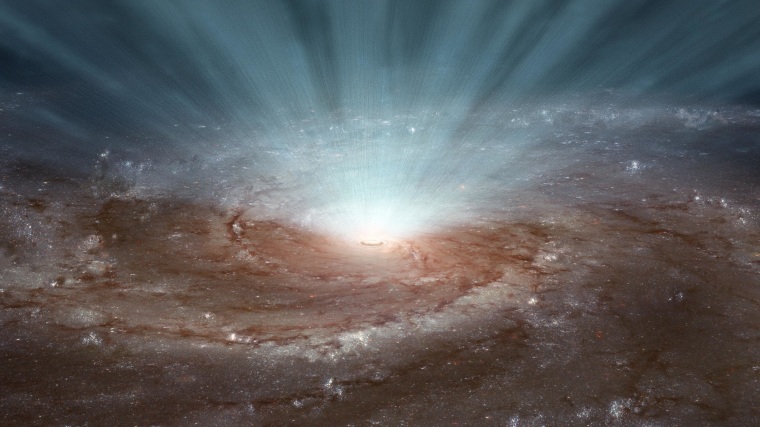A ravenous, giant black hole has belched up a bubble of cosmic wind so powerful that it could change the fate of an entire galaxy, astronomers say.
Researchers using two X-ray telescopes have identified the cosmic wind blowing outward from the supermassive black hole at the center of galaxy PDS 456, more than 2 billion light-years from Earth. Astronomers have seen these winds before, but the authors of the new research say this is the first observation of a wind moving away from the center in every direction, creating a spherical shape.
The wind could have big implications for the future of PDS 456: It will cut down on the black hole's food supply, and slow star formation in the rest of the galaxy, the researchers said. And it's possible that strong cosmic winds are a common part of galaxy evolution — they could be responsible for turning galaxies from bright, active youngsters to quiet middle-agers. [The Strangest Black Holes in the Universe]

The supermassive black hole at the center of PDS 456 is currently gobbling up a substantial amount of fuel: A smorgasbord of gas and dust surrounds the black hole and is falling into the gravitational sinkhole.
As matter fall inward, it radiates light. The black hole at the center of PDS 456 is devouring so much matter, that the resulting radiation outshines every star in the galaxy. These kinds of bright young galaxies are known as quasars.
New observations of PDS 456 have revealed a bubble of gas moving outward, away from the black hole. Using NASA's Nuclear Spectroscopic Telescope Array, or NuSTAR, and the European Space Agency's XMM-Newton space telescope, the authors of the new research imaged the galaxy on five separate occasions in 2013 and 2014. The researchers say they can show that the photons of light emitted by the in-falling matter are pushing on nearby gas, creating the wind.
Scientists say the study, published in the journal Science, highlights a curious twist in the black hole's behavior.
"It tells us that the shape of the wind is not just a narrow beam pointed in our direction. It is really a wind that is flowing in every direction away from the black hole," said Emanuele Nardini, a postdoctoral researcher at Keele University in England.
NASA says PDS 456 "sustains winds that carry more energy every second than is emitted by more than a trillion suns."
— Calla Cofield, Space.com
This is a condensed version of a report from Space.com. Read the full report. Follow Calla Cofield on Twitter. Follow Space.com on Twitter, Facebook and Google+.